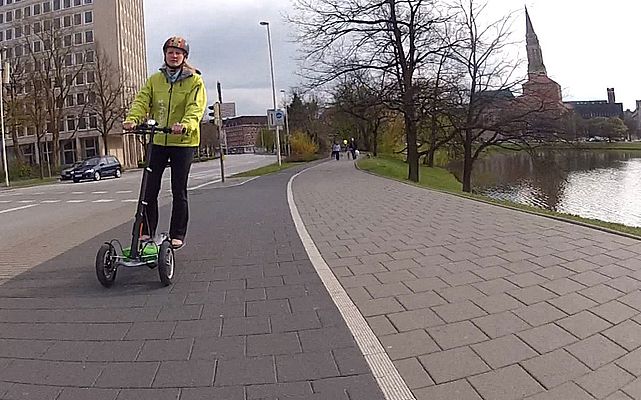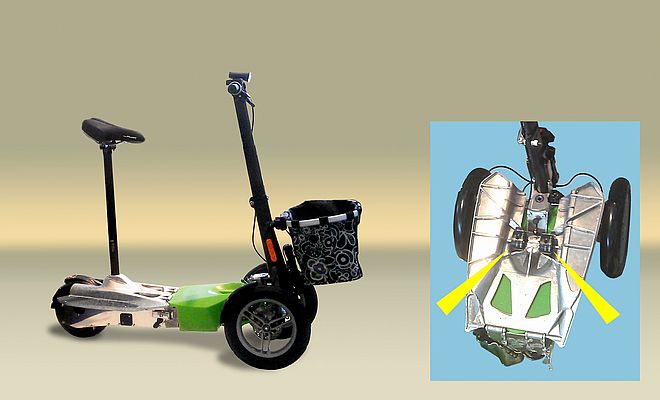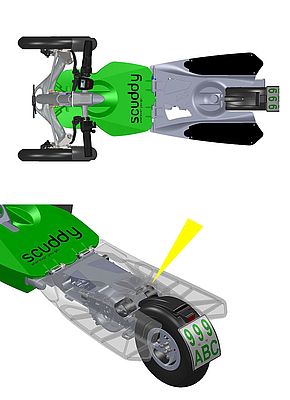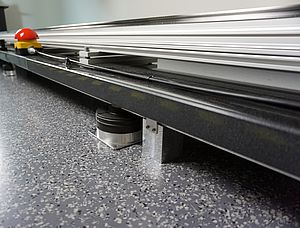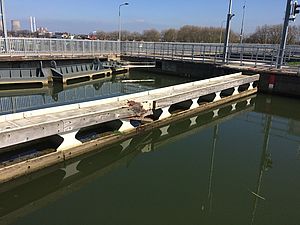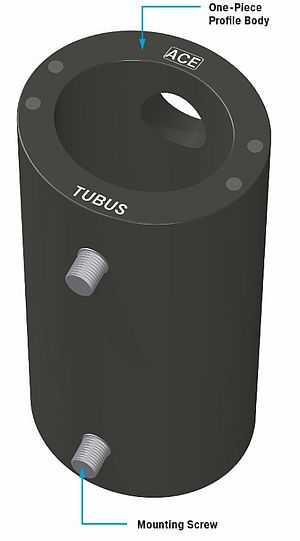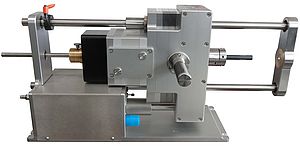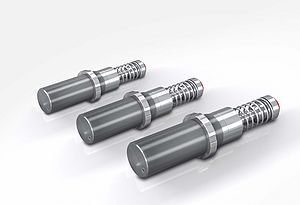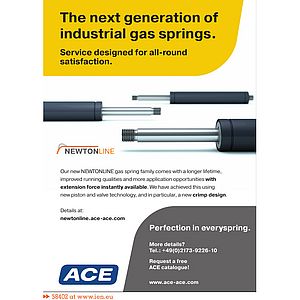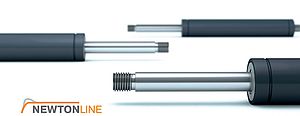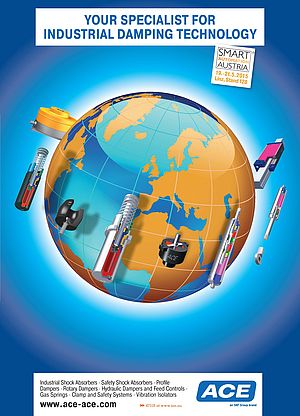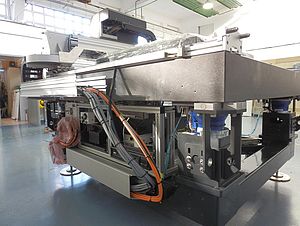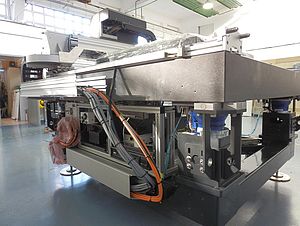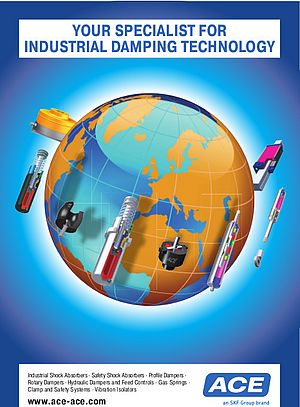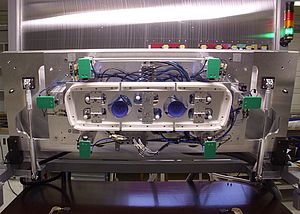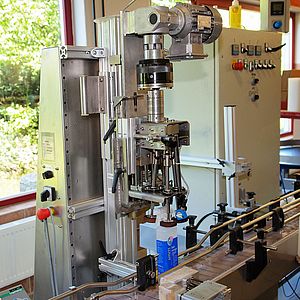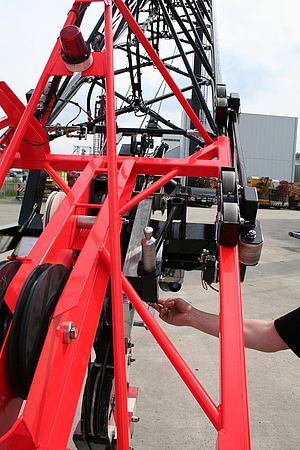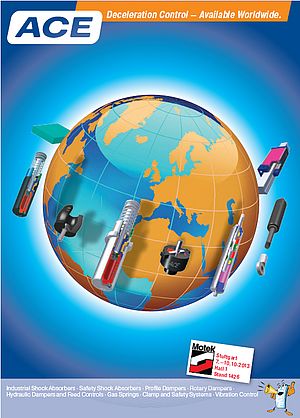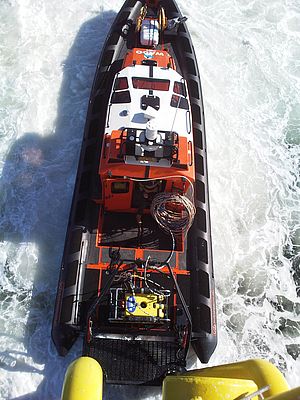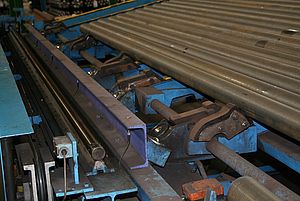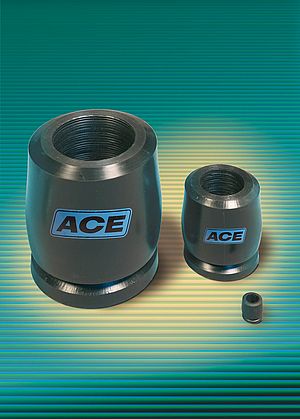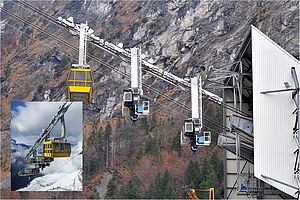They do not need a parking lot, are approved for road traffic, can be converted into a piece of luggage thanks to the patented folding mechanism and therefore, can be taken along in public transport free of charge. The electric scooter from Scuddy has got everything to become accepted as first-choice means of transport, not only in overcrowded city centres. This is in particular due to its unique ride comfort, thanks to machine elements called TUBUS from ACE Stoßdämpfer.
Scooters with electric drives are environmentally friendly and convenient, and have been around for quite a while. However, all the fun was quickly spoilt with the first generation of the three-wheeled vehicles. They were too heavy, had short ranges, and were not compact enough for transport and each bump set the driver's teeth on edge. The two graduate engineers Tim Ascheberg and Jörn Jacobi from Kiel/Germany now resolved these troubles.
However, this is not all. Their new e-scooter named Scuddy excels by other details regarding technology and design. Another clue: Because their vehicle can be folded to a type of pushcart with a patented folding mechanism, it can be taken along in public transport free of charge. In this way, it is not considered to be a vehicle, but rather a piece of luggage. Three more moves and the pushcart turns into a cube, little larger than a box of mineral water. So the Scuddy can easily be taken on holidays. This also was the starting point of the development by the start-up entrepreneurs, sponsored by the foundation "Innovationsstiftung Schleswig-Holstein" (ISH): Both innovators stated that none of the previously developed, battery-operated means of transport would be designed for transport in a bus or train, the folding mechanisms would be bad to worse, if available at all. "We offer quite a different type of mobility to the customers of our product, which in all situations is supporting and not constricting", said Ascheberg. Although the range of the Scuddy is considerable, it is not designed for long-distance traffic. The emission-free scooter is ideal for city centres, regardless of the model ordered, it has a version with a maximum speed of 35 km/h or you might be satisfied with the variant of 20 km/h, where no helmet needs to be worn. The range of the slower model is 40 kilometres and 30 kilometres for the faster Scuddy. The more advanced the development process of the invention of both graduates from the Kiel University of Applied Sciences was the more came the issue of comfort and thus damping of bumps to the fore. The engineers initially knew ACE from the industrial gas pressure springs. So they decided to consult the company from Langenfeld in this specific design case.
Profile dampers can be perfectly integrated into the side step design
The task was quickly explained to Thorsten Kohnen, technical advisor of ACE: The side step of the Scuddy should be dampened to allow the driver a comfortable ride even in case of potholes and other bumps. Ideally, the characteristic curve should be marked by soft increase of power with a long stroke. Therefore, models similar to automotive shock absorbers were not suitable. The elegant appearance of the scooter as well as the folding mechanisms designed to save space precluded the use of other conceivable damping solutions such as e.g. the use of industrial gas springs. From the outset, low-grade alternatives such as rubber dampers made of polyurethane or simple steel springs were dismissed by Ascheberg and Jacobi. They wanted a compact design along with progressive damping behaviour, so that after a review of the large ACE catalogue, they initially choose TUBUS profile dampers of the TS and TC series. After initial consultation with Kohnen, the TC series turned out to be not suitable due to the high power absorption. The occurring forces would be too low, said the ACE expert, and jointly with the engineers from Kiel, entered the CAD data section in the download area of the ACE homepage www.ace-ace.de.
The initial choice was TUBUS profile dampers type TR45-23H. They used the maximum stroke and recorded the first compression as an emergency stop curve. For the static and dynamic characteristic curves, the team recorded the fourth compression each time to consider the setting behaviour.
In the next step, they jointly selected four profile dampers types TR52-32H for road trials. These involved some other key benefits for the e-scooter. Made of light-weight co-polyester elastomer, they are not a limiting factor for the 2.0 HP and/or 1,500 W electric motor with the maintenance-free belt or for the lithium-iron battery. With a lifecycle of up to several million load strokes, TUBUS can also be used by frequent drivers without hesitation and the maintenance-free elements require no additional limit stop. A convenient sideline for the user is their reliability in temperatures ranging from -40° C to 90° C.
However for the design engineers it was of greater importance that the installation is easily accomplished and no deflection kinematics were required. At last, for the selection of the types mentioned above, the question was crucial whether the machine elements would be able to cope with the intended payload of 100 kg. In another test series, said the inventors of the Scuddy, the models type TR52-32H finally prove to be the right choice from the wide range of the TR-H series. With an exterior diameter of 52 mm and a stroke of 32 mm, these dampers are able to accommodate 11.7 Nm/stroke each time. With larger models, it would have been possible to install one TUBUS only.
Since the space of the Scuddy is limited due to its height rather than its width, they finally used a tandem design. "In addition, this TUBUS solution provides for decoupling of the driver's mass impacts into the scooter. For this reason, we were able to design the rear swinging fork even a little more lightweight", says Jacobi. The design engineers are happy that the users are enthusiastic both by riding and the easy transport of their product.



